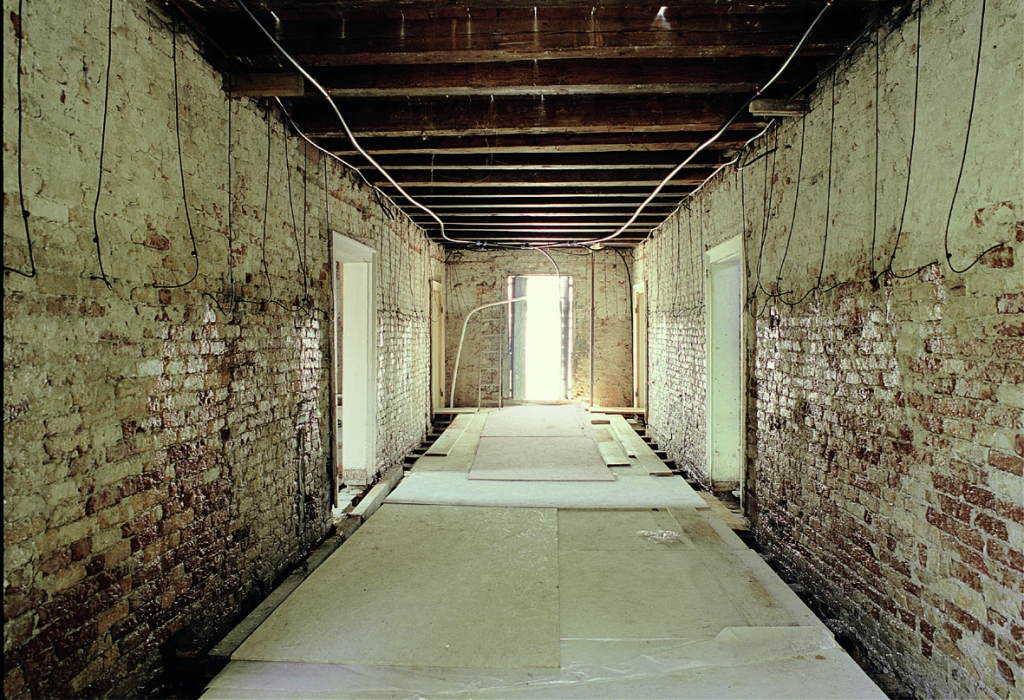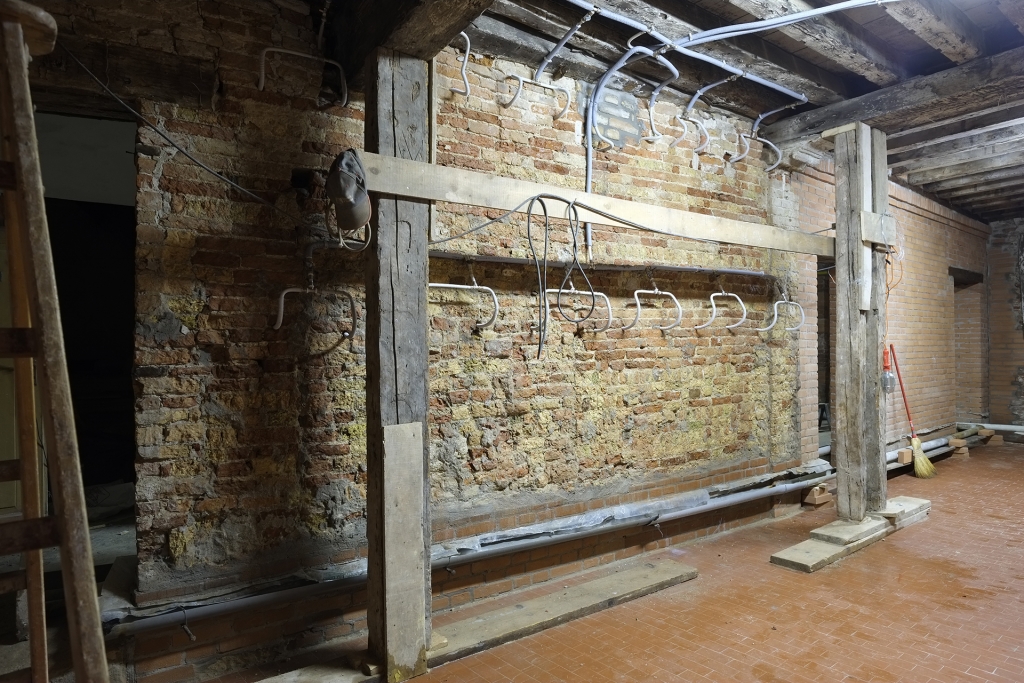Houses in Venice are surrounded by seawater. The soluble salts it contains are the worst enemies for brick, stone and lime mortar. Capillarity transports salt as much as several metres above ground level, where the water evaporates and the salt crystallizes in the pores of the masonry and provokes its destruction. Salt can easily be washed out by immersing single elements into tanks of water, but how can an entire construction be efficiently cleared of salt?

Casa a San Giobbe, washing walls (photo Leo Schubert 2005)
For the successful pilot project of the renovation of a townhouse in Cannaregio, Venice (see CONSERVATION PRACTICE IN VENICE) a pipe system used for irrigation in horticulture was used to wash all the walls up to 4 metres above the ground. The salt concentration dropped from nearly 40g to less than 2g per kilogram of brick wall within a period of 75 days (for a detailed description see Leo Schubert, “La realizzazione del progetto”in Un restauro per Venezia. Il recupero della casa in calle delle Beccarie 792, eds. John Millerchip, Leo Schubert, Milan 2006).

Palazzo Soranzo, washing walls (photo veniceteam 2014)